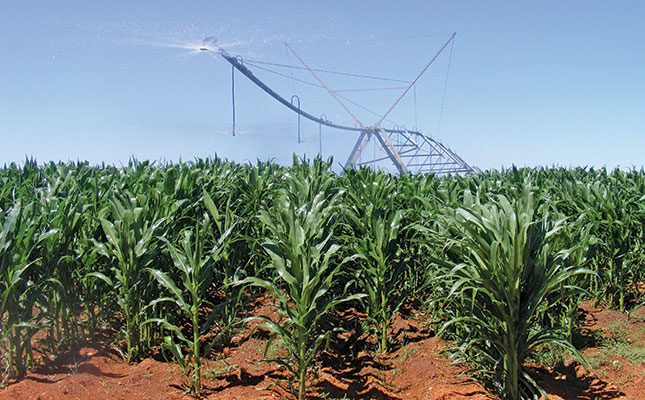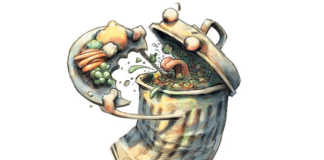Successful marketers realise that effective marketing involves more than just the product. Madam Customer has become spoilt. In the past, it was enough to supply her with the right product. Today, she also expects it at the right price, at the right time and via the right promotion. Most producers can deliver the right product, but success can only be achieved if they supply the entire marketing mix.
Statistics
To begin with, producers must identify their target market. According to the 2014 Bureau for Food and Agricultural Policy report, only 16,5% of South Africans – about six million adults – have average household incomes of more than R23 539 a month, while 21% – eight million – have an average household income of between R11 882 and R16 754.
A total of 51,7% – about 19 million adults – have a household income of R3 205 to R6 822, while the remaining 10,7% – about four million adults – have a household income of R1 480 to R2 588.
When aiming at the top end of the market, remember that there are only six million people in this segment. This market is so small that US producers would probably not even consider targeting it. Our producers would have a right royal time in the US: their top-end market is about the size of South Africa’s entire population! However, we have to deal with the reality that our top- end market is limited, so care has to be taken not to over-supply it.
South Africa has more than 37 million people over the age of 15 – adults in marketing terms. There are 15 million people under the age of 15. By giving these young people access to good education, employment and opportunities, we can significantly grow the consumer base. Failure to do so will have a negative impact on the market and food security. Farmers cannot continue to produce food if people cannot afford to buy it.
Get to know what she wants
Once the target market has been identified, producers need to identify the needs of the consumer. Don’t think that you can decide what she needs. Madam Customer will decide for herself and if you get it wrong, you will pay the price. You need to establish what she wants, how she wants it, where she wants it and what she is willing to pay for it.
Moreover, these demands change, so doing it once is not enough. If you don’t have direct contact with consumers, talk to your retailer. A recent consumer report has found that South African food consumption has remained relatively stable over the past 10 years. However, people are eating less fruit and vegetables while consuming more sugar and drinking more carbohydrate drinks. Be aware of these trends and adjust your production and marketing to take advantage of them.
Keep in mind that most products have price resistance. If the price rises above a particular figure, consumers will not buy the product, no matter how special it is.
Prices should also be as stable as possible. Tomatoes, for example, should not be R4,99/ kg one day and R16,99 the next. Big price fluctuations don’t foster faith in produce; indeed, Madam Customer might well think she is being exploited.
Ensuring year-round availability
Availability is another key factor. Since Madam Customer expects to have access to a product whenever she feels like it, regardless of the season, retailers are placing a high premium on a constant supply of good quality produce throughout the year.
Meeting this expectation is difficult but not impossible. You could join up with other farmers or use tunnel production, two approaches that could gain you a strong competitive edge.
Competition, and creating customer loyalty
Once the marketing mix is under control, you have to create loyalty. The chain store market is a dog-eat-dog environment. No one grants anybody else a place in the sun; if one retailer goes down, the others celebrate.
The same applies for farmers; they constantly compete with each other. When a neighbour finds a window of opportunity, other farmers try to cash in. If they can’t, they try to work the neighbour out of the deal and take his place. To ensure customer loyalty in this scenario, you need to create a positive consumer experience.
For example, if produce is sold as ripe and ready, it should not still be green when Madam Customer gives it to her children. Or if apples are sold by the bag, there should be no rotten or bruised fruit inside.
Farmers therefore not only have to ensure that the fruit or vegetables they send to the market are of exceptional quality, they need to become involved in the cold chain management to ensure that the produce is stored and treated correctly until it is sold.
Retailers: crucial partners
Retailers have an important role to play in all this. As people no longer buy groceries necessarily from shopping lists but through what they see, the fruit and vegetable department of the typical grocery store should be neat and clean, and contain attractive produce at all times.
This department has become the heart of the typical chain store. It is often found near the entrance and sets the tone for the rest of the store. It should hypnotise the consumer into making her feel as if she has entered a beautiful vegetable garden or orchard where she is in control.
The fruit and vegetable department should also set the tone in pricing. Fresh produce should cost significantly less than items elsewhere in the store. Failure to create a pleasant shopping experience will result in Madam Consumer either not buying as much as she would have, or worse, waltzing off to the next store or shopping centre.
For more information, email Johan van Deventer at [email protected].













